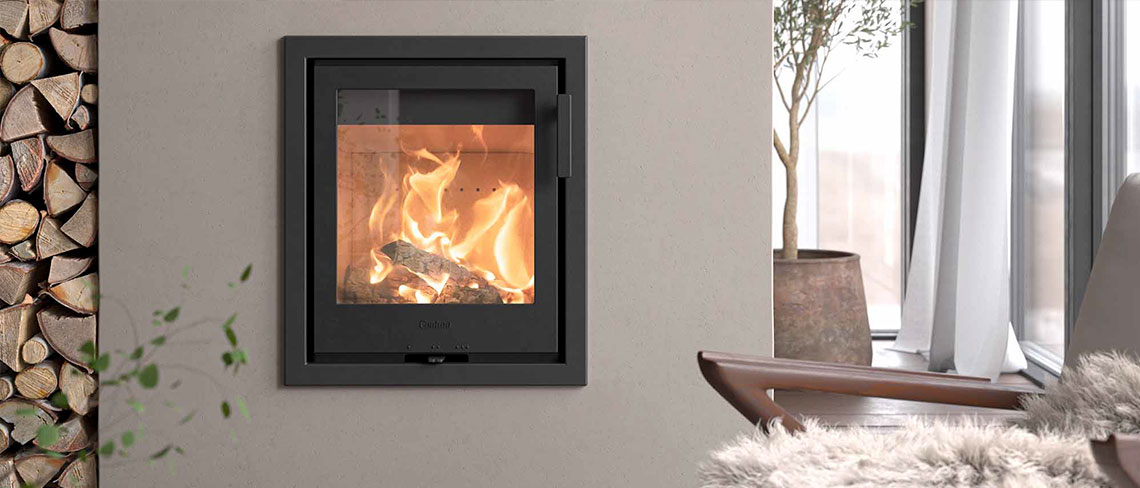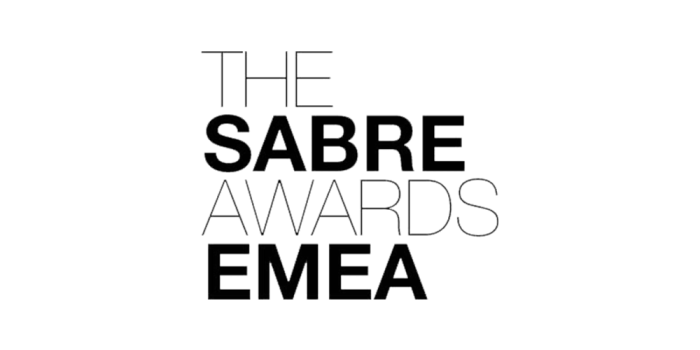
Expert from Europe’s leading wood burning stove manufacturer, Contura, shares troubleshooting guide for any proud yet puzzled owners.
During these long, dark and cold winter months, there is no doubt that the bright and warm flickering flames of a wood burning stove can bring a much-needed dose of cosy comfort to any home.
And so, when proud owners come to light their wood burners, ready for a relaxing evening spent in the warmth of its crackling fire, it can be disappointing, frustrating and even stress-inducing when met with any obstacles or issues – whether it be unpleasant fumes, a lack of heat or unsightly blackened glass.
Luckily, the below guide, compiled by Phil Wood, from Swedish manufacturer, Contura, explains how such issues can often be resolved through a simple understanding of wood burning stove dos and don’ts.
Phil says, “By using and maintaining a wood burning stove correctly, owners will not only ensure that they get to enjoy their appliance at peak performance but will also benefit from its potential to provide an efficient, cost effective and sustainable domestic heating solution.
“From using the right fuel and lighting a fire correctly to cleaning the glass regularly and booking an annual chimney sweep appointment, there are a number of simple tips and tricks that can help you ensure that you maximise the potential (and efficiency) of your wood burning stove.
“It is important to note that not all wood burning stoves are the same, so always be sure to check the instructions in your product manual for guidance specific to your appliance. Similarly, if your wood burner is more than ten years old, we would recommend replacing it entirely with a modern, Ecodesign compliant version.”
Read on for Phil’s troubleshooting guide to using and maintaining your beloved wood burning stove this winter and beyond…
What should I be aware of when buying wood for my stove and why is it so important?
Using the wrong type of fuel can cause all sorts of issues, from producing an unsatisfactory fire (i.e. lacking heat and/or creating excessive amounts of smoke), to causing a blackened glass door or insert.
The reason for this is that wet, treated, polished, oiled and waste woods tend to burn inefficiently. This can mean that a lot of unpleasant soot and smoke is produced, which can also lead to the blackening of your wood burner’s glass.
To avoid this, fuel your woodburning stove using the best seasoned, dry or kiln-dried wood that you can afford from a recommended supplier. High quality hardwood species such as ash, oak, beech or birch make ideal options. And make sure to opt for wood with a moisture content below 20 percent which will ensure maximum efficiency and optimal heat and flame from your woodburning stove, while minimising smoke.
Accredited British wood suppliers will have a ‘Ready to Burn‘ certification mark so look out for this label. Issued by the UK’s wood fuel accreditation scheme, Woodsure, this certification is assurance that suppliers can demonstrate that their logs have an optimum moisture content of between 12 and 20 percent.
Be sure to store logs at home in a dry area with sufficient air flow to avoid any unwanted moisture retention ahead of burning them.
How should I go about cleaning my wood burning stove and why is it so important to do this?
There are multiple parts of a wood burning stove so, unsurprisingly, it is not a case of one-size-fits-all when it comes to cleaning – each stove part requires a different approach. Failure to clean your stove frequently enough and in the right way can have a huge impact on your wood burner’s performance, longevity and appearance.
It goes without saying that, before cleaning, you should only do so when it is completely cool.
– Glass
Firstly, the glass should be cleaned regularly. If done frequently, gently rubbing it with dry paper or kitchen roll will likely be sufficient to remove any soot remnants.
If the soot does not come off with dry paper – which can happen when it has been allowed to build up over a prolonged period of time – try the following trick: dampen the paper (or use a damp cloth), dip it in the stove’s own ashes, and use this to gently rub the affected areas on the glass. Though it might feel counter-intuitive to use ‘dirt’ (ash) to clean, this simple method can be highly effective in cleaning your wood burner’s glass.
– Interior
Opt for a steel brush when cleaning the cast iron parts in your wood burning stove’s combustion chamber (where the wood burns). The wire bristles of the brush make it ideal for dislodging and removing any unwanted byproducts left behind by your fire such as soot, ash, clumps of charred wood, and tar-like creosote.
When emptying the ash from the ash box, don’t forget to clean out the actual space where the ash box sits to remove any residue left behind.
To minimise the fire risk when disposing of the ash itself, store it in a covered, non-combustible container (after making sure there are no embers left) for at least one week before getting rid of it.
– Exterior
To clean the painted exterior of your wood burning stove, simply wipe with a damp cloth. No special cleaning products are required and some may even cause damage.
– Chimney, Flue & Stove
The chimney, flue and stove itself should be swept professionally at least once a year. Having all the parts checked to ensure they are functioning correctly and that there are no blockages is crucial to troubleshoot any issues and keep your stove running efficiently and effectively, so be sure to get your annual chimney sweep appointment booked in.
Why is my fire taking so long to get going and/or producing excessive smoke? Are there any tips for how I can best start it to avoid this?
If you are struggling to get a healthy fire going in your wood burning stove, start by ensuring that you are using the correct fuel (see above).
Next, consider the way in which you are lighting the fire. For the best and most efficient burn, it’s important to ensure it is lit correctly. For this, it is important to note that every stove is different, so be sure to always follow the lighting instructions in your product manual specific to your wood burner.
As a general rule, you should always start by warming the chimney, flue and stove first, to then progressively build up your fire. Any attempt to create a roaring fire straight away will likely lead to a nasty down draft whereby, instead of passing out of the chimney, smoke is carried into your home.
The ‘top-down lighting’ technique, where kindling is placed on top of the logs, tends to be very effective when it comes to lighting a wood burning stove. This is because it encourages the wood to catch more gradually, allowing the chimney, flue and stove time to warm up first and, consequently, reducing the risk of a down draft.
In terms of the amount of fuel you should be looking to use, we typically recommend starting with two-average sized logs topped by smaller pieces of finely chopped wood as kindling, with a natural firelighter on top. Light the firelighter and allow it to burn down through the stack, which will heat the stove and chimney progressively, enabling a good draft.
After lighting your fire, ensure that the wood burning stove’s air vents are on the setting that allows the maximum amount of air flow. This will help the fire get going, avoiding incomplete combustion. Once the fire looks steady, adjust the air vents to slowly decrease air flow (which will, conversely, increase the burn time of the fuel).
I am using the right fuel and have no trouble starting the fire, but why is it not heating up the house effectively?
Modern wood firing technology (Ecodesign compliant products) uses complete combustion for a better heating economy and a clean, low-carbon burn, so if you prep and light the fire correctly and refuel it at regular intervals, it will provide clean and consistent heat.
That said, not all stoves are the same, so be sure to check and follow your product manual for instructions specific to your wood burner when it comes to refuelling and adjusting the air vents to maintain the correct air flow and combustion temperature.
As a general rule, an average wood burner requires two to three logs per hour, with no more than one to two logs added at a time.
In the interests of safety, only refuel when the existing logs have burnt down to nothing but glowing embers and be mindful of opening the wood burner’s door slowly to allow the combustion chamber to adjust to the change in air pressure.
Then, once the logs have been added and the door is shut, adjust the air vents to increase air flow temporarily to enable the newly added logs to catch fire and burn cleanly and efficiently.
How do I slow the burn down?
If you find that your stove is burning through more logs than expected (as mentioned above, the average wood burning stove requires around two to three logs per hour), once the fire has caught and is burning well, adjust the air vents to lessen air flow. This will reduce the amount of oxygen and should slow the rate at which your wood burner burns through fuel.
Is there a limit to how much I can use my wood burning stove?
Contura’s wood burning stoves are designed to be able withstand continuous operation, however, every wood burning stove is different due to factors such as age, manufacturer and style, so you should always refer to your appliance’s manual for guidance specific to it.
For more information, please visit www.contura.eu.
-Ends-
Notes to editors:
- Rooster PR will coordinate comment, interview and profile opportunities for Contura UK Country Manager, Phil Wood.
- The Contura PR team will also arrange visits to the nearest Contura Design Centre dealerships or the Contura showroom in Doncaster to see the product range.
For further press information, please contact:
Tilly Everard | Anna Nyman | Elsa Findlay | Julie Aguilera
Rooster.
T: +44 (0)203 440 8930
E: [email protected]
About Contura:
Contura is Europe’s leading manufacturer of wood burning stoves, offering an extensive range of classic and contemporary wood burners; from traditional insert stoves suitable for existing fireplaces, to freestanding statement models made with innovative materials such as soapstone.
Starting at £1,295, Contura stoves are premium yet affordable. Award winning, timeless Swedish design means the products complement or enhance any style of home, whilst also offering outstanding performance, maximum efficiency, practicality and ease of use.
Designed and assembled at the factory located in Markaryd, Sweden, and manufactured to the highest standards, Contura stoves are highly energy efficient, offering powerful convection, superior combustion technology and clean burning systems. All Contura stoves are DEFRA Clean Air Act exempt and thus approved for use in Smoke Control Areas.
Contura stoves can be purchased through a network of 165 independent retailers nationwide.
Contura is part of the NIBE group, a Swedish manufacturing company producing world class solutions in sustainable energy across Europe, North America, Asia and Australia.
Contura is a founding member of the Stove Industry Association (SIA) in the UK.
Contura is a proud supporter of Eden: People+Planet’s efforts to restore and monitor over 241,150 hectares of land, creating jobs to support local communities and the environment in the long-term. Since 2018, Contura has funded the planting of over 170,000 trees.
For more information, please visit www.contura.eu






